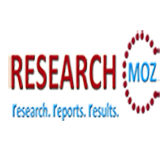Researchmoz presents this most up-to-date research on "Medical Device
Pricing & Reimbursement 2014". The report focuses primarily on
quantitative market metrics in order to characterize the growth and
evolution of the Remote Patient Monitoring Market.
Browse Full Report With TOC At : http://www.researchmoz.us/medical-device-pricing-and-reimbursement-2014-report.html
Provides insight into medical device pricing and reimbursement systems and latest regulations across 17 key countries.
This guide provides everything you could need to know about medical device pricing and reimbursement in 17 established and emerging economies. It examines the increasing role that health technology assessment plays in the reimbursement decision-making process and procurement strategies - both of which have a direct impact on device pricing.
Countries covered in this report:
Asia/Pacific: Australia, China, Japan and South Korea
European Union: Belgium, France, Germany, Italy, The Netherlands, Spain and United Kingdom
Latin America: Brazil, Chile, Colombia, Mexico and Peru
USAHealth Technology Assessment (HTA) plays a key role in the increasing trend of value-based care.
This guide provides everything you could need to know about medical device pricing and reimbursement in 17 established and emerging economies. It examines the increasing role that health technology assessment plays in the reimbursement decision-making process and procurement strategies - both of which have a direct impact on device pricing.
Countries covered in this report:
Asia/Pacific: Australia, China, Japan and South Korea
European Union: Belgium, France, Germany, Italy, The Netherlands, Spain and United Kingdom
Latin America: Brazil, Chile, Colombia, Mexico and Peru
USAHealth Technology Assessment (HTA) plays a key role in the increasing trend of value-based care.
Browse Market Research Medical Equipment Related Reports At : http://www.researchmoz.us/medical-equipments-market-reports-109.html
Whether through direct or indirect measures, the prices of
medical devices are being squeezed in order to provide healthcare
systems with the best quality of care for the lowest cost. The key trend
is value-based healthcare. Value is defined in terms of clinical
efficacy as well as cost-effectiveness. HTA is increasingly being
employed as part of the reimbursement decision-making process. While the
majority of markets do not yet directly link the outcome of HTA to
reimbursement, in some countries, notably France and Australia, a
positive HTA is required prior to listing for reimbursement.
Particularly in advanced healthcare markets where costs are constrained
and growth is slow, demonstrating value to HTA agencies has never been
more important for medical device manufacturers. In emerging markets,
formal HTA policies are in their infancy. However, HTA is becoming more
important around the world, with countries such as Brazil, South Korea,
Chile and Colombia all having introduced HTA policies over the last few
years.
Key questions answered in this report
Which countries use reference pricing for medical devices?
What strategies are being employed to indirectly regulate prices?
Which countries have positive lists for reimbursement?
What have diagnosis related groups got to do with medical device reimbursement?
Is there a national standard for HTA in the USA.
Key questions answered in this report
Which countries use reference pricing for medical devices?
What strategies are being employed to indirectly regulate prices?
Which countries have positive lists for reimbursement?
What have diagnosis related groups got to do with medical device reimbursement?
Is there a national standard for HTA in the USA.
For More Information Kindly Contact:
Email: sales@researchmoz.us
Web Site: http://www.researchmoz.us/
Blog: http://deepmarketresearchreports.blogspot.com
Email: sales@researchmoz.us
Web Site: http://www.researchmoz.us/
Blog: http://deepmarketresearchreports.blogspot.com





